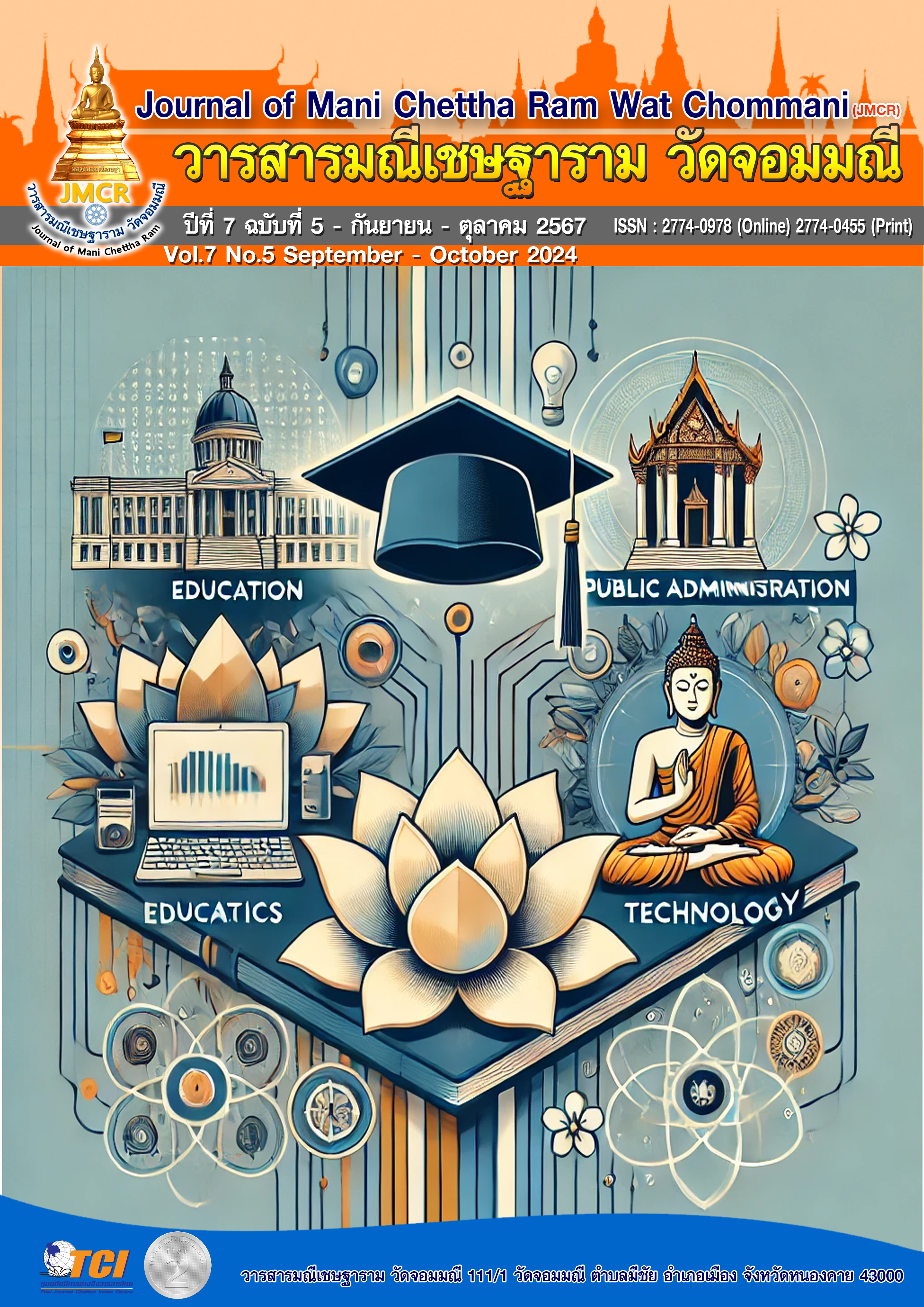GUIDELINES FOR PERSONNEL MANAGEMENT ACCORDING TO THE SAPPURISDHAMMA PRINCIPLES OF PHA-O SCHOOL ADMINISTRATORS LUANG PRABANG
Keywords:
หลักสัปปุริสธรรม 7, การบริหารงานบุคคลAbstract
This research aimed to 1) study the application of the 7 Sappurisadhammas in personnel management, 2) to compare the application of the 7 Sappurisadhammas in personnel management among students with different gender, age, education level, working experience, and job positions, and 3) to study recommendations on the application of the 7 Sappurisadhammas in personnel management at Pha-O School, Luang Prabang. The quantitative research used an interview form with a sample of 100 participants and 5 key informants from the interviews. The research instruments were questionnaires and interview forms. The statistics used were frequency, percentage, mean, standard deviation, t-test, F-test, and Scheffe’s method of analysis of differences. The qualitative data used theoretical content analysis
The results of the study were found that:
- 1. The results of the analysis of the application of the principles of the 7 Sappurisadhammas in personnel management at Pha-O School, Luang Prabang, were at a high level overall ( = 3.85) When considering each aspect, it was found that the aspect of Dhammaññuta, had the highest mean ( = 3.95) followed by the aspect of Atthanñuta ( = 3.89) and the aspect of Pukkalanñuta, had the lowest mean ( = 3.76)
- 2. The results of the comparison of the application of the 7 Sappurisadhamma principles in personnel management at Pha-O School, Luang Prabang, found that personnel of different genders were significantly different overall at the .001 level. Different ages were significantly different at the .01 level. Different education levels, work experience, and positions were not significantly different at the .05 level.
- Suggestions on the application of the 7 Sappurisadhamma principles in personnel management at Pha O School, Luang Prabang, found that personnel management should be planned systematically, operations should be checked to be consistent with the set goals, activities that support self-development to increase knowledge should be promoted, work should be done by prioritizing the problems that occur, understanding the context and problems in the organization, and understanding the differences of each individual in order for personnel management to be effective.
References
กระทรวงศึกษาธิการ. (2546).การบริหารสถานศึกษาที่เป็นนิติบุคคล, กรุงเทหมานคร :กระทรวงศึกษาธิการ.
กระทรวงศึกษาธิการ. (2546).คู่มือการบริหารสถานศึกษาขั้นพื้นฐานที่เป็นนิติบุคคล, กรุงเทพมหานคร:กระทรวงศึกษาธิการ.
กระทรวงศึกษาธิการ. (2545). พระราชบัญญัติการศึกษาแห่งชาติ พ.ศ.2542 และที่แก้ไขเพิ่มเติม (ฉบับที่ 2) พ.ศ. 2545 พร้อมกฎกระทรวงที่เกี่ยวข้องและพระราชบัญญัติการศึกษาภาคบังคับ พ.ศ. 2545, กรุงเทพมหานคร: โรงพิมพ์คุรุสภาลาดพร้าว.
พระครูพิศาลปริยัตยานุกูล. (2561). แนวทางการบริหารงานบุคคลตามหลักสัปปุริสธรรม 7 ของผู้บริหารโรงเรียนประถมศึกษาเขตบางขุนเทียน สังกัดกรุงเทพมหานคร. ปริญญาพุทธศาสตรมหาบัณฑิต. (พุทธบริหารการศึกษา).บัณฑิตวิทยาลัย : มหาวิทยาลัยมหาจุฬาลงกรณราชวิทยาลัย.
พระมหาชัยวัฒน์ จตฺตมโล (พรหมสนธิ). (2560 ข). รูปแบบการบริหารงานบุคคลตามหลักพุทธบริหารการศึกษาของโรงเรียนพระปริยัติธรรม แผนกสามัญศึกษา กลุ่มที่ 4. พุทธศาสตรดุษฎีบัณฑิต พธ.ด. (พุทธบริหารการศึกษา).พระนครศรีอยุธยา : บัณฑิตวิทยาลัย มหาวิทยาลัยมหาจุฬาลงกรณราชวิทยาลัย
มหามกุฎราชวิทยาลัย. (2525 ค). พระสูตรและอรรถกถาแปล อังคุตรนิกาย ปัญจกนิบาต เล่มที่ 2 ภาคที่ 2. กรุงเทพมหานคร: โรงพิมพ์มหามกุฎราชวิทยาลัย.
ล้วน สายยศ และอังคณา สายยศ. (2540). เทคนิคการวิจัยทางการศึกษา. กรุงเทพฯ : สุวีริยาสาส์น.
ส่งศรี ชมพูวงศ์. (2559). ระเบียบวิธีวิจัยทางสังคมศาสตร์. นครศรีธรรมราช : สำนักพิมพ์มหาวิทยาลัยมหามกุฏราชวิทยาลัย.
สำนักงานเลขาธิการสภาการศึกษา. (2560). แผนการศึกษาแห่งชาติ พ.ศ. 2560 – 2579. กรุงเทพฯ :บริษัท พริกหวานกราฟฟิค จำกัด.



